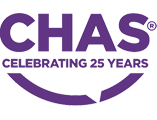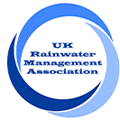Information Guide for Rainwater Harvesting
Awareness of rainwater harvesting technologies in the UK is lower than other European countries where the technology is more widespread. The number of new and existing buildings using rainwater harvesting for a sustainable water supply is dramatically increasing year on year. Across the UK, there are thousands of rainwater harvesting systems successfully operating to reduce unnecessary consumption of drinking water supplies.
What is Rainwater Harvesting?
Rainwater Harvesting is the collection, treatment and storage of rainwater which is captured from the large surface area of a roof space to be re-used within a building. Rainwater Harvesting can provide a sustainable water supply to cover many common water uses within a residential or commercial property, including toilet flushing, irrigation, manufacturing, and vehicle washing. Rainwater Harvesting can cover up to 75% of total water consumption within a commercial property.
The growing need for Rainwater Harvesting
There is a growing need for widespread use of Rainwater Harvesting, especially in the UK where water scarcity is a growing problem for the population. Estimates from the Environment Agency highlight that the country will require an additional four billion liters of water per day by 2050 if water shortages are to be avoided.
The problem is not just limited to the demand for water outstripping supply. Existing drainage infrastructure is also failing to keep up with the volume of rainfall entering the aging sewer network resulting in frequent pollution into rivers and seas during heavy rain. CSOs (combined sewer overflows) involve large valves opening to release untreated sewage into rivers or seas when the network cannot process all the wastewater. Combined Sewer Overflows occurred over 301,000 times in 2022 alone due to the drainage network not being able to cope with the volume of rainfall.
Rainwater Harvesting can be used to supplement traditional mains water drinking supplies within new and existing buildings and reduce the volume of rainwater entering the drainage network. In the United Kingdom, there is eighteen times more rainfall than the net population of the country highlighting the scope for the use of rainwater harvesting technologies. Rainwater Harvesting Systems are supplied in many variations, especially for larger, commercial systems which are designed to harvest large volumes of rainwater for recycling. A study across eighty operational sites using Stormsaver Rainwater Harvesting Systems showed that mains water consumption was reduced by between 50-70% through Rainwater Harvesting.
Rainwater Harvesting Systems from Stormsaver
Stormsaver are the UK Market Leader for Rainwater Harvesting Systems and the largest dedicated rainwater harvesting company in the country. We have supplied over 2000 rainwater harvesting systems in the past 20 years and maintain 1500 systems across the country every year.
Stormsaver Rainwater Harvesting Systems are designed, built, tested, and maintained by our experienced team here in the UK meaning we can offer the most bespoke solutions in the marketplace.
We also have an in-house team of maintenance engineers, and installation engineers who can fully take care of all types of rainwater harvesting systems. We maintain all types of manufacturers’ systems which means we know what works and we know what could work better. This unrivalled knowledge all feeds back into the design of our systems.
Learn more about Stormsaver Rainwater Harvesting Systems here.
The benefits of Rainwater Harvesting
Recent hosepipe bans announced by water companies in the UK have exemplified the need for increased use of rainwater harvesting. The Environment Agency are also considering making rainwater harvesting a mandatory consideration in the future implementation of Schedule Three in England.
There are many benefits to installing a rainwater harvesting system;
- Water Conservation - Rainwater Harvesting can reduce water consumption by 75% in commercial buildings, contributing towards increased water efficiency nationally.
- Carbon Emissions - Relying on a sustainable supply of rainwater is much more carbon efficient than traditional mains water supplies. Systems contribute towards a reduction in Scope 3 carbon emissions for organisations who choose to install a rainwater harvesting system.
- Reduced Filtration - Rainwater is clean, clear, sustainable and a valuable resource which is ideal for reuse as a non-potable water supply. Rainwater requires much less filtration than drinking water supplies.
- Flood Risk - Rainwater Harvesting reduces localised flood risk by attenuating and re-using storm water on-site.
- Financial Savings - An alternative rainwater supply can significantly reduce water bills.
- Environmental Benefits – Rainwater Harvesting is a positive investment in the local environment.
- Environmental Credentials – Water Reuse can contribute towards up to five additional points towards BREEAM accreditations. Rainwater Harvesting is great for achieving positive environmental credentials.
Potential uses of Rainwater Harvesting
Rainwater Harvesting can provide an alternative water supply for many common uses of water.
- Toilet flushing and urinals.
- Vehicle wash plants for cars, vans, HGVs, and trains.
- A non-potable supply for washing machines.
- Pitch and garden irrigation systems and traditional garden bib taps.
- A water supply for cooling systems and air conditioning units.
- Rainwater Harvesting can supply water for manufacturing and production purposes.
- Dust suppression and construction activities.
- Rainwater can be used to top up fire sprinkler tanks and for fire fighting purposes.
Rainwater Harvesting Systems should be sized with suitable storage to ensure the total demand can be covered. Always use an experienced specialist like Stormsaver.
Components of a Rainwater Harvesting System
Rainwater Harvesting is achieved through several different components.
A rainwater storage tank which is sized based on 18 days storage capacity is used to collect and hold rainwater collected from the roof area.
Submersible pumps are located within the rainwater storage tank to transport the reclaimed rainwater supply to a break/header tank for gravity fed systems or a pressure vessel for pressurised rainwater harvesting systems.
Rainwater Harvesting Systems also rely on several stages of filtration to ensure the reclaimed rainwater is free of contaminants and debris. Firstly, a pre-tank filter is used to remove leaf debris and other larger particles. The mesh arrangement of a pre-tank filter is used to filter water down to 1000 microns (1mm). Next, rainwater is drawn through a floating suction filter which collects reclaimed rainwater from the cleanest part of the main storage tank. For the best water quality results, it is recommended that ultraviolent filtration be used in collaboration with an automatic backwashing facility.
A central control panel will control all pumps, filters, the automatic mains water top up for drought periods and monitor water savings.










